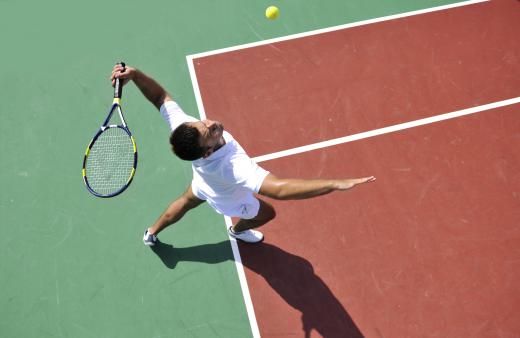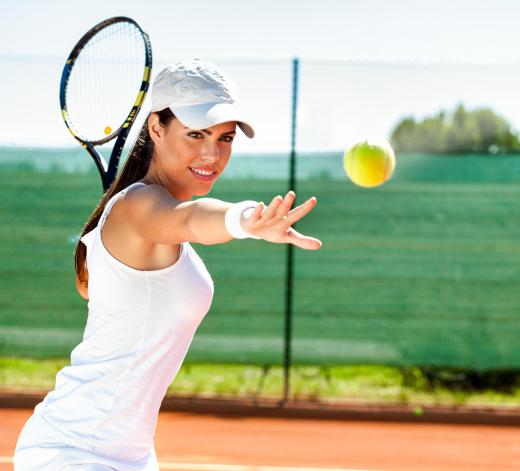Pronation in tennis refers to a specific type of serving technique. The way that the body and arm move are very important for a tennis serve. In particular, the twisting motion of the arm — or pronation — is necessary to achieve a powerful serve, and pronation in tennis is used to produce more ball spin. This motion is very natural to the arm and is commonly used with specific tennis racket grips.
The term "pronation" describes the rotation of the wrist and hand, or forearm, on its own axis. As the forearm moves and twists, the arm bones turn over each other. A more basic explanation of this movement is the twisting that occurs when the shoulders are held still but the forearm moves from a palm up position to a palm down position.

The movement of the arm during pronation in tennis is actually very natural, as the arm turns inward on its own during a serve swing. The actual pronation occurs at the top of the tennis swing as the player hits the ball and brings his arm down. In order to achieve this twist effectively, a proper grip on the tennis racket is required.
The most common grips used to add pronation to a tennis swing are known as the continental and eastern backhand. Of the two, the continental grip is the most common and often described as holding the tennis racket handle like an axe when chopping wood. The eastern backhand grip is a grip that has the index finger base knuckle and heel of the hand holding the first bevel of the tennis racket. This grip is considered excellent for control and adding spin.

The main reason that pronation in tennis serves are used is to achieve spin. As with many other sports, the faster the ball spins, the faster it moves. When no pronation is used, the tennis ball is hit straight on, called a pancake serve, something many beginners use when first learning tennis. Spin is achieved right before the racket comes into contact with the ball; the pronation aligns the strings in the proper direction needed to hit the ball.

If the racket were allowed to spin freely after pronation in tennis, it would spin very fast, similar to an ice skater spinning on the ice. To achieve this power requires a lot of force, and professionals can pronate the arm very quickly. Speed and power are transferred to the ball as it comes in contact with the racket.
